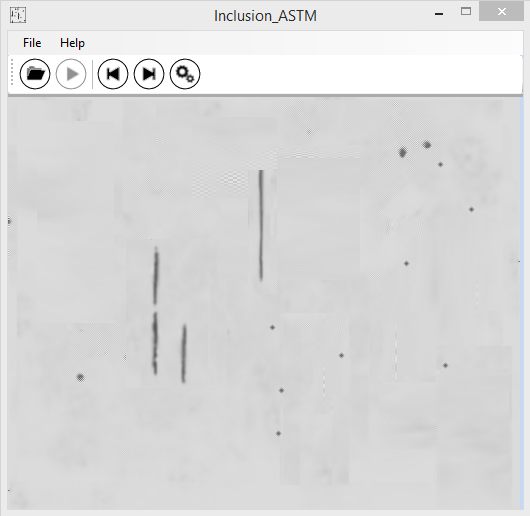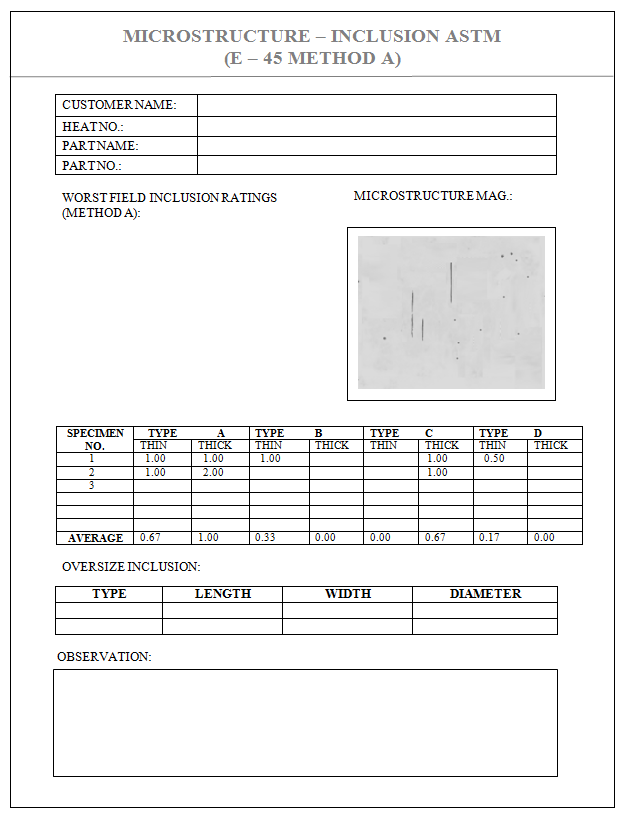Inclusion Analysis (ASTM)
Inclusion Analysis (ASTM)
- Inclusion Content of Steel
- Characterization by Size, Shape, and Distribution
- Type and Classification: Inclusions are grouped into Types (A, B, C, D) and further categorized as thick, thin, or oversize (for Type A and Type D).
- Oversize Detection
- Standard Compliance: ASTM E-45 Method A.
Inclusion Analysis (ASTM) Overview
This application accurately determines the inclusion content of steel based on size, shape, concentration, and distribution, rather than chemical composition. Although it does not identify chemical compositions, the software classifies inclusions into composition-related categories such as sulfides, oxides, and silicates (a specific type of oxide) using advanced microscopic methods. The inclusions are further categorized by Type (A, B, C, D) and are classified into thick, thin, and oversize inclusions for Type A and Type D.
Systems Specification
| Sr. No | Description |
|---|---|
| 1 | Characterizes inclusions by size, shape, concentration, and distribution, not by chemical composition. |
| 2 | Classifies inclusions into composition-related categories (sulfides, oxides, silicates). |
| 3 | Categorizes inclusions by Type (A, B, C, D) into thick, thin, and oversize classifications. |
| 4 | Detects and reports oversize inclusions for Type A and Type D. |
| 5 | Automatically generates Word reports, complying with ASTM E-45 Method A. |
| 6 | Essential for assessing the cleanliness and quality of steel. |


